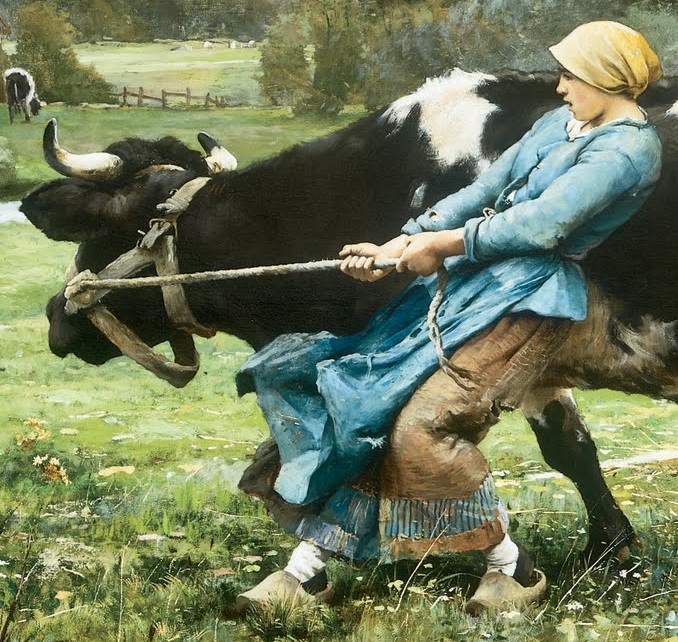There are already some excellent answers for shoe materials. I focus on clothing. The OP specifically asked about celebratory clothing. In most cultures, celebratory, ceremonial, and ritual clothing are luxury items, i.e. expensive. In this answer, I explore some expensive vegetarian and vegan fabrics and fabric art techniques that could be used to make luxury clothing.
Non-organics
This was already mentioned by the OP, but there are a lot of decorative uses of metal, jewels, glass, and semi-precious stones.
In addition to jewelry, these materials can also be added to clothing as metal embroidery (Such as goldwork or Assuit), beading, or as woven threads (lamé and cloth of gold).
Chemistry
Rayon was invented in the 1890s and uses plant material to make a fabric with a smooth texture similar to silk. At the time, it was called artificial silk. Depending on the technology of your civilizations, this might be an option.
Just for fun, I also looked into how hard it is to make synthetic fabrics like nylon. I'm not a chemist, so I was surprised to find out that you can make nylon in a beaker at home if you have sebacoyl chloride and hexanediame. More research is needed for a full Andy Weir style solution for the resources needed to source the two chemical components, but I thought this was a promising start.
In our history, the discovery of these chemical processes made fabric production cheaper, but of course, the chemists guild might be protecting their new manufacturing method as a trade secret and setting an inflated price for their novel soft and slinky fabric that is this season's must-have item. Or perhaps, rayon or nylon is a lost invention of a previous civilization, with only a few existent garments handed down across generations.
Found animal materials
Found animal material such as feathers, seashells, shark teeth, ambergris, found bones etc. are vegetarian, and have also been historically valuable as jewelry and decorative objects. For example, cowrie shells have been used as both currency and jewelry
Oral stories and birch bark scrolls seem to indicate that the shells were found in the ground, or washed up on the shores of lakes or rivers. Wikipedia
Human hair is sometimes considered vegan because the producers usually donate the hair of their own free will. In the Victorian period, human hair was often used for jewelry. While human hair is not ideal for making thread, a technique similar to wig-making could be used to make human hair "furs".
Unusual Plant material
For celebratory clothing, in the Pacific paper cloth and bark cloth are alternatives to more familiar fabrics. These traditional cloths are expensive labor-intensive fabrics used for ceremonial clothing.
Expensive Dyes
Some dye-stuffs are simply very expensive. The most famous examples are animal-products (i.e. Tyrian purple), but plant-based expensive dyes also exist, such as saffron. Logwood (a black dye) was even a target of piracy.
Just make it labor intensive
Many valuable fabrics are simply labor intensive to produce such as handmade lace, embroidery, tapestry, and dye techniques like ikat. The base material doesn't matter much whether it be hemp, linen, or cotton. If it's labor intensive, it will be a luxury good, and the members of your society will value it as a decorative item regardless of what it looks like because it will be a status symbol.
For example, black was once a status symbol color because it required multiple layers of dye to get the darkest shades. The dyes used were woad and indigo, both of which are plant-based. Conversely, white was also a status symbol because of the cost of keeping white fabric clean.
The style was very often worn in white to denote a high social status (especially in its earlier years); only women solidly belonging to what in England was known as the "genteel" classes could afford to wear the pale, easily soiled garments of the era. Wikipedia
To summarize, all you need to do is emphasize that the celebratory clothing is expensive to source, manufacture, or maintain, and it will follow naturally that it has special cultural status.






